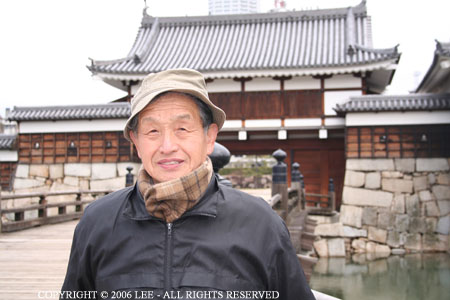|
According
to the 1996 national population census, Japan's total
population was 125.7 million. This made Japan the
seventh most populous nation in the world. The
population has more than doubled since the first national
census in 1920, when it was about 56 million.
Population
growth has slowed in recent years. The annual growth
rate averaged 0.3% in the 1990-95 period, considerably
lower than the world average of 1.6%. As
of 1994 Japan' population density was 335.4 persons per
square kilometer, one of the highest in the world.
By
comparison, the population density was 828 persons per
square kilometer in Bangladesh, 440 in South Korea, 328 in
Belgium, 237 in Britain, 124 in China and 27 in the United
States (1992 figures).

LIFE
EXPECTANCY
The average life
expectancy at birth for the Japanese was 76.57 years for
males and 82.98 years for females as of 1994, representing
increases of about 30 years each over the past six
decades. (The figures stood at 47 years for men and 50
years for women in 1935.)
This sharp increase
is attributed to the fact that infant mortality rates and
deaths from epidemics, tuberculosis, and other diseases
have declined significantly. The average death rate,
which stood at 10.9 per 1,000 in 1950, was 7.1 per 1,000
in 1994. In 1950 there were 28.1 births per 1,000
people.
This rate slowly
declined to a low of 9.9 in 1991. Due partly to
subsequent policies aimed at reversing the trend, the rate
crept back to 10 per 1,000 in 1994. In addition, the
total fertility rate (the number of children that a woman
can expect to give birth to in her lifetime) has declined
gradually from 3.65 in 1950 to 1.5 in 1994.
The aging of society
continues to advance. In 1950 children of up to 14
years accounted for 35% of the total population, adults
(15-64 years) for 60% and the elderly (65 years and older)
for 5.0%. In 1994 children accounted for 16.3% of
the total population, adults for 69.6% and the elderly for
14.1%.
Back
to Top
LEISURE
There are certain
times in Japan when holidays appear one after another,
such as Golden Week, from the end of April to the
beginning of May. Other full-scale holidays are at
the end of the year (New Year's) and the middle of August
(Bon festival).
Vacations are
concentrated during these three periods. As a
result, 3 times a year, the throng of people on
transportation facilities and roads returning home to
visit parents and coming back again, unfailingly becomes
an issue. Travel abroad during this period reaches a
peak at international airports such as New Tokyo
International Airport (Narita), which is invariably
congested with people.
There are businesses
adopting flexible holidays to avoid the crowd.
Taking annual vacations has become an accepted company
policy, even taking days off has now become easier.
An amendment of the labor Standard Law, carried out in
April 1997, implemented a 40-hour week.
Consequently, the era of a 5-day work week has finally
gained ground.
Based on the
activities and polled opinions of those 15 years and
older, the shorter the holiday, the more one indulges in
pastimes like gambling. When the holiday is 2 to 3
days long, gambling decreases and activities such as
driving, enjoying the outdoors and outdoor sports
increase. When the holiday stretches to 3 or more
days, domestic and international travel show a sharp
increase, as well as activities in the areas of self
enrichment including family communication, reading, and
studying.
Back
to Top
|







